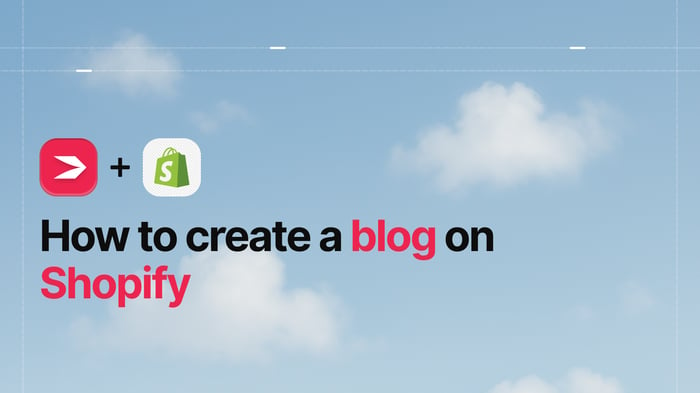At a glance, it’s hard to find something in common between Cratejoy and Shopify, except maybe that they’re both types of e-commerce platforms, so what would a Cratejoy vs. Shopify comparison look like?
Cratejoy is a subscription service that works as an e-commerce marketplace for both selling and buying monthly subscriptions. That means you can sign up as either a merchant or a customer. With Cratejoy, you can run a subscription-based business where you sell monthly boxes filled with various goodies in a particular category.
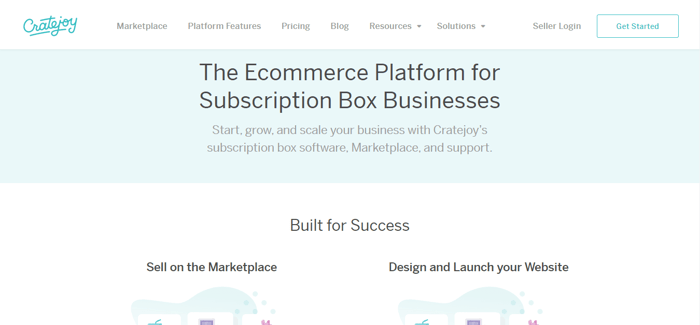
On the other hand, Shopify is a cloud-based, all-in-one e-commerce platform that allows sellers to start, manage, and grow their business in the most convenient way possible, meaning you have all the tools you need in one place.
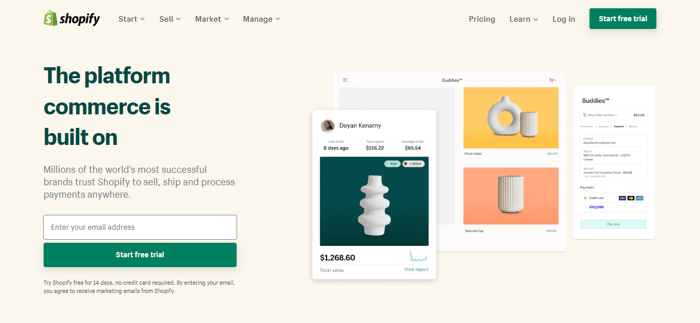
Despite being different in many ways, we’ve put together a side-by-side comparison of Cratejoy vs. Shopify to help you see how these two platforms stack up against each other.
Table of Contents
Pricing Plans and Transaction Fees
Cratejoy and Shopify have very different approaches to their pricing plans. This is only logical considering that they’re essentially different types of platforms catering to very different types of businesses.
Compared to Shopify, which has a wide commercial appeal and a fair number of pricing plans to accommodate the needs of different businesses, Cratejoy is basically a “niche platform” with less room for features by way of its nature. Still, you’d be surprised at how agile it can be.
Cratejoy
Up until recently, Cratejoy offered three selling plans, two paid and one free. Now, however, you can choose between just one paid and one free plan. Both have their upsides and downsides, so let’s look at the details.
Free
The main feature of the free plan is that it only lets you sell on the marketplace. This means that you get to offer your own subscription box, where Cratejoy is the middleman. Your store will appear on the Cratejoy marketplace, where potential subscribers can find you.
The free plan is free in the sense that there’s no monthly payment, but there are transaction fees. For each transaction you make, Cratejoy takes 1.25% of the total sum plus $0.10. But that’s not all.
They also charge a 15% category-based referral fee on each transaction for listing your store on the marketplace. When you add the transaction fees charged by your payment provider, it can be a little pricey.

Costs aside, we like that Cratejoy has made its free plan fully functional – you can start selling as soon as you set everything up. There are no extra perks because it’s a free plan, but the biggest benefit you’ll get is increased exposure with the platform’s 4 million monthly views and 40,000+ monthly sales, which will certainly bring traffic to your store.
The features of the free plan are basic, but they can be enough to get you started and get you growing before needing to upgrade. You’ll be able to integrate with Stripe and accept payments in 138 currencies, as well as join Cratejoy’s affiliate program to increase your revenue.
Lastly, to optimize your workflow, you can integrate with a selection of marketing apps, like MailChimp, CartRover, ShipStation, and others. However, keep in mind that some are only free to install and may incur some fees.
All-in-One
Cratejoy’s paid plan is $39/month, plus it includes the same transaction fees we mentioned in the free plan. The paid plan isn’t called “All-in-One” for nothing as it includes a number of useful features to make your subscription box business successful. This plan is best suited for merchants who already have a fair number of subscribers and are ready to take their business to the next level.

With this plan, you can create a website for your store using Cratejoy’s own website building tool. With the website, you also get free hosting, unlimited bandwidth, a custom domain, and SSL checkout protection. You can even tinker with the HTML/CSS code and make modifications to the template you choose.
In addition, your sales tax will be automatically calculated and collected at checkout, and your customers will be automatically shown real-time shipping rates. You’ll also have access to advanced analytics and conversion rates as well as premium support during business hours.
Shopify
Being a large platform that caters to businesses of all types and sizes, Shopify has more pricing plan options than Cratejoy, and they are: Basic ($29/month), Shopify ($79/month), and Advanced ($299/month).
If you opt for yearly, two-year, or three-year plans, you’ll get a discount of 50%, 20%, and 25%, respectively. And if you’d only like to try Shopify out and see why it’s so great, you can sign up for a free 14-day trial, no credit card required.
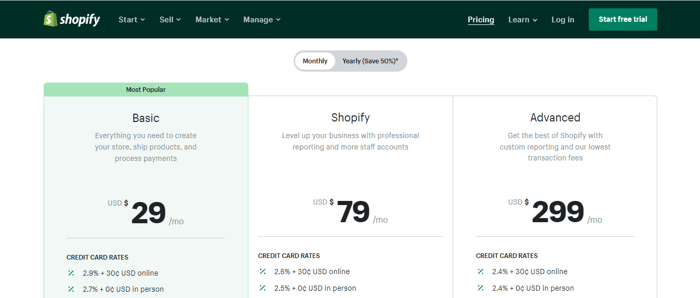
Generally, all plans offer a set of core features that enable you to successfully run an e-commerce business. As with all platforms, the difference between the plans is in the features, meaning that higher-tiered plans include not only more features but also expanded ones. For example, you’re able to add more inventory locations with the Advanced plan than with the Basic plan.
Having said that, here’s what Shopify’s pricing plans have to offer:
Setting up an online store
Selling unlimited products
Adding unlimited contacts
Multiple staff accounts (the number of accounts depends on the plan)
Ability to sell through multiple sales channels (e-commerce store, social media, brick-and-mortar store, online marketplaces, and so on)
Setting up multiple inventory locations, including warehouses, retail stores, etc. (the number of inventory locations depends on the plan)
Managing orders and payments directly from your Shopify admin
Ability to offer discount codes and gift cards
Free SSL certificates
Reports and analytics (higher-tiered plans offer more advanced tools)
Marketing automation
E-commerce automations like automating manual tasks and creating workflows (not available in the Basic plan)
Calculated shipping rates (only available in the Advanced plan)
Offering shipping discounts (discount depends on the plan)
Abandoned cart emails
Buying shipping labels individually or in bulk
Building custom marketing automations
Integrated native payment gateway (Shopify Payments) with fraud analysis feature
International commerce features (international domains, currency conversion, local payment methods, and international market management; duties and import taxes and custom pricing by market only available in the Advanced plan)
Shopify Fees
Like Cratejoy, Shopify does entail some additional costs like transaction fees and credit card fees that vary depending on the plan.
If you opt to use Shopify’s native payment gateway, you won’t be charged any transaction fees, but if you use a third-party payment provider, you’ll be charged 2% in the Basic plan, 1% in the Shopify plan, and 0.5% in the Advanced plan.
Besides these, Shopify also charges online credit card fees, international/Amex credit card fees, and in-person credit and debit card fees.
Starter and Shopify Plus
In addition to the three main plans, Shopify also offers two additional plans: Starter ($5/month) and Shopify Plus (starting at $2000/month), which have different uses.
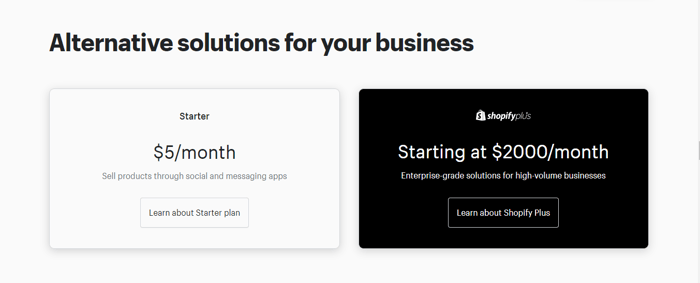
The Starter plan is designed for selling products through social media, email, WhatsApp, Etsy, LinkedIn, and other similar media channels without needing to create a dedicated e-commerce website.
Shopify offers you design-ready product pages to set up that are optimized for mobile. The perks you get are: unlimited product pages, a contact page for communication with customers, a shopping cart, Shopify inbox, and Shopify’s order management and fulfillment network.
On the flip side, while the Starter plan works for small-volume orders, the Shopify Plus plan is designed for high-volume businesses that operate on an enterprise level. It’s a customizable plan that starts at $2000, and the price depends entirely on what your needs and requirements are.
Shopify Plus makes running an enterprise a much less daunting task because it promises to increase conversion rates, save you time and money by automating campaigns, improve the UX by including video and 3D display on the product pages, and more.
Features and Tools
Cratejoy and Shopify both have some similar features, with the most notable being a website builder and marketing automation. Still, they’re quite different simply because they were each designed for different purposes.
Either way, it’s refreshing to see how many advanced features Cratejoy offers. While not comparable to Shopify, whose features are more sophisticated, we can still find some things in common between them, so let’s get into it.
E-Commerce
Cratejoy
Cratejoy has some really good e-commerce features to offer for its niche. For one, even though monthly subscription boxes are the main product, Cratejoy also enables you to offer one-time products for sale for customers who aren’t ready to commit to a monthly subscription, which is a smart move because it can increase the chances of the customers returning. Additionally, with Cratejoy, you can also sell additional products as one-off promotional sales to subscribers.
Your customers will have full control over their subscription settings and product options. This includes being able to choose to skip a month in their subscription, but you’ll have total control over subscription cancellations and refunds.
Lastly, Cratejoy supports adding multiple users to your account when you need help with management and order fulfillment.
Shopify
Being the biggest e-commerce platform since forever, Shopify offers a number of useful features. For one, when you make your account, you automatically get an e-commerce website alongside a blog and the ability to sell unlimited products. No matter which plan you choose, you’ll have the ability to sell through multiple channels – from online marketplaces to social media. With the higher-tiered plans, you get to automate manual tasks and build workflows.
Besides that, if you have an international customer base, you can provide your customers a localized buying experience with prices in their own currency and a website in their language, as well as offer custom prices tailored to that market. Your international customers will also have a precise overview of the duties and import taxes at checkout.
You also get the ability to use Shopify’s own POS and cut some of the transaction fees, as well as accept in-person payments with Shopify’s POS Lite. Lastly, you’ll be able to add multiple staff accounts that’ll have access to the Shopify Admin and POS for when you need more people on your team.
Shipping
Cratejoy
Before we get into the features, it’s important to note that Cratejoy isn’t responsible for handling the shipping. Cratejoy is only an intermediary between the subscriber and the merchant that provides a platform for the transaction.
Despite this, the advantage of Cratejoy is that it can link you up with major shipping services and enable you to offer competitive shipping prices to your subscribers. In addition, it allows you to print your own shipping labels directly from your profile without the need for third-party apps. Another handy feature is that you’ll be able to integrate with shipping fulfillment solutions like Pirate Ship and ShipStation to automate the process.
But the most useful feature for both you and your customers is probably the automatic tax calculation, which is based on yours and your subscriber’s location, the automatic shipping estimate, the product’s weight, price, type, etc.
Shopify
Shopify collaborates with the most notable shipping carriers and is able to offer you competitive shipping prices with discounts ranging from 77% to 88%, depending on which plan you’re subscribed to. Similar to Cratejoy, you can print your own shipping labels directly from your dashboard without the need for fancy equipment.
You’ll also have the ability to create manual orders and assign your inventory to different locations where you store your products so that you can ship from there. Lastly, you can integrate with third-party apps to get accurate shipping rates, though this feature is only available in the Advanced plan.
Marketing
Cratejoy
Cratejoy’s marketing game is pretty decent. It provides the basic but most important features. It allows you to create email templates for specific occasions and send them automatically, like welcome emails, promotion emails, order shipped, tracking updates, receipts, etc.
Plus, to stay in touch with customers, you can integrate with third-party marketing apps like CardHook to automatically send cart abandonment emails and SumoMe, which is an all-in-one app to automate marketing processes and increase conversion rates.
Cratejoy also enables you to create refer-a-friend campaigns where both your subscriber and their friend can get different benefits, like 50% off or one free month of subscription.
Lastly, you can create promotional coupons and run promotions to further increase engagement and attract more subscribers.
Shopify
Shopify’s marketing features are similar to Cratejoy’s. For example, you can offer discount codes to your customers and create gift cards for them to buy for someone else. However, the best marketing feature is that you can create workflows (templated or custom) and automate sending promotional emails, welcome emails, first purchase emails, and abandoned cart emails.
You can also add an unlimited number of contacts, regardless of the plan, and group customers into numerous segments so that you can filter them more easily later for promotional activities.
Analytics
Cratejoy
Cratejoy really has you covered when it comes to analytic tools, as it should. Considering that it’s an e-commerce platform, not having access to proper analytics would be a big disadvantage. Luckily, Cratejoy offers more than just the basics.
Your dashboard gives you access to different types of key performance indicators, such as churn rates, conversion funnel analytics, revenue analytics, and more. You also have access to cash flow reports that give you an overview of how much you should be making monthly and which products and/or campaigns are the most profitable.
For anything else, you have Google Analytics ready right out of the box, which also includes their e-commerce support.
Shopify
Shopify includes access to reports and analytics for all plans, though the higher-tiered plans offer more advanced analytics. You’ll have an overview of total sales, conversion rates, returning customer rates, average order value, top products sold, sessions and sales by location, device type, traffic source, and more.
You’ll also get insights on your profit margin, what channels are the biggest conversion sources, as well as how your customers move through your site.
Website Builder
Cratejoy
One of the best features of Cratejoy is that it provides you with a fully functional website builder called Designer. With this tool, you get many of the perks you get with other website builders, like Wix for example, and can build a good-looking site that’s also mobile responsive. Cratejoy gives you hosting, a custom domain, and SSL protection at checkout so that your subscribers’ private info remains private.
Their templates are designed specifically for subscription e-commerce rather than general e-commerce, and they’re optimized to offer the ultimate UX and help you generate revenue. You don’t need to know code to use their website builder – you can customize your chosen template with the editor. However, if you do want to tinker with the code and customize the details of your site, Cratejoy gives you access to the code editor.

The site builder is simple and very easy to use – it won’t take you long to get used to it, even if it’s your first time using a tool of this kind. However, that doesn’t make it ineffective, as it’s quite functional.
The sections of the page are located on the right, and you can click on each to customize it. You can change the basics, like the colors, backgrounds, and fonts, but also customize the social media buttons and the header and footer.
Shopify
Shopify’s website builder comes with a set of free themes to choose from, each optimized for a different type of business. There are also paid themes you can choose if none of the free ones work for you.
The editor itself is pretty responsive, comprehensive, and easy to use. You can find all the sections of the page in the right display menu, and if you want to edit something you can just click on it and do your thing.

Like Cratejoy, Shopify gives you the ability to modify the code if you want to tweak your chosen theme, which is great if you’re code-literate and want to take your store’s design to the next level. Your site is already optimized for mobile, but you can switch to mobile view and make some changes if you want to improve how it looks.
Shopify’s editor is much richer than Cratejoy’s, which is expected, considering that Shopify’s website builder is supposed to be versatile enough to be used by different kinds of businesses. There are more minor refinements you can make with this editor, like changing the heading size, image opacity, content alignment, etc.
Blog
Cratejoy
Unlike Shopify, Cratejoy doesn’t have a native blog solution, but you can add a blog to your Cratejoy Storefront that’s hosted by a third-party platform like WordPress.com and Tumblr. To do this, you need to create a subdomain of your blog by using Namecheap, a domain name registrar. If you’re interested in this feature, you can find the full instructions here.
Shopify
Shopify’s blogging tool includes all the basics, meaning you can write the post and edit the text as you please, add the author, add the title and meta-description, and create the URL, and that’s it. It’s very straightforward, so it’s a breeze to use. However, there are no other perks. While it can be good for occasional blogging, it’s just too basic.

If you expect more from your blog, you can try DropInBlog. DropInBlog is the most sophisticated blogging tool currently on the market. It includes far more than just the basic features and makes blogging easy and fun. It’s very easy to integrate into Shopify, and if you need more reasons why it’s so good, you can check out our DropInBlog alternative comparisons.
Integrations
Cratejoy
Cratejoy allows you to integrate with a variety of different apps to improve and streamline your business. The selection isn’t overwhelming, but you can find everything you need – from apps for email and shipping automation to tax calculation and analytics.
Additionally, you can integrate Cratejoy with an existing website hosted by a third-party platform. This is for merchants whose storefront is hosted elsewhere but want to add Cratejoy to their checkout and management system. However, Cratejoy’s support cannot help you with executing this operation as it requires code modification on the other platform. Find more info here.
Shopify
You won’t have to worry about integrations with Shopify because its app library is huge. There are literally thousands of apps to integrate with, considering that Shopify doesn’t come with many native tools and solutions.
Everything you need you can find across the six categories that aren’t really “categories” in the traditional sense, but they’re organized by a goal the seller may have; for example, increasing traffic, delivering the package safely, selling more, etc. You can even find DropInBlog on Shopify’s app store.
Some of the apps are completely free, but others are paid, and some offer free trial periods. You won’t have to worry about the apps slowing down your site because this is not an issue with Shopify.
Additional Tools
Both Cratejoy and Shopify offer a set of handy business tools. They're free, and we really like them because they can help you feel less lost when you’re starting your business. Let’s check them out.
Cratejoy
Cratejoy includes a considerably lower number of e-commerce tools compared to Shopify, but what it offers is enough for this niche. You’ll have access to:
Subscription box calculator. Calculates your possible earnings from running a subscription box business.
Power subscription box calculator. Similar to the aforementioned, but it also allows you to edit and export the results.
Etsy calculator. Calculates and compares the revenue earned on Etsy versus the revenue earned from selling subscription boxes.
Pricing guide. Allows you to calculate how much you should charge for each box, which is very useful.
Startup costs calculator. As the name suggests, this tool calculates the costs you’ll have when starting your business.
Product sourcing guide. Introduces you to places where you can source your products.
Shopify
Shopify also offers a suite of free business tools that are the perfect complement to the features you already get when you sign up. Here’s some of what they offer:
Logo maker. Use Shopify’s Hatchful to create a unique logo for your business.
Business name generator. If you’re having trouble coming up with an original name for your store (and domain), this tool can help.
QR code generator. This one is pretty self-explanatory and very useful for driving traffic and generating customer interest.
Business card generator. Business cards are a must, and this tool lets you easily create your own.
Shipping label template. This tool lets you create shipping label templates in no time; all you have to do is fill out the forms and let it do the rest.
Business loan calculator. This tool enables you to calculate how much it’ll cost you to get a loan.
CPM calculator. You can use this tool when you want to calculate the effectiveness and profitability of your ad campaigns.
Profit margin calculator. This tool helps you determine the best selling prices for your products in order to get the most profit.
Discount calculator. Use this tool to calculate how much you’ll earn after creating a certain discount.
Help and Customer Support
Cratejoy
This is the one area where Cratejoy falls flat. While their Support Center is full of fairly regularly updated articles and instructions on anything you need, they are very hard to reach. The reason that we said “fairly” regularly updated is that, at the time of writing, there are some articles that still mention the three pricing plans, even though currently there are only two. But this is just one example as there are other discrepancies that need to be attended to.
They don’t offer any of the traditional ways of customer support like phone support, email, or live chat. They have a chatbot, but that’s a bit beside the point. The only way you can reach them is by submitting a ticket and waiting for them to contact you, which somewhat defeats the purpose of customer support.
They have a Facebook community of merchants that you can join and chat with other sellers about your experiences, but if you have a technical issue, it’s unlikely that will solve it.
This is an issue because the merchants selling on the platform are the “customer support” for their own customers; but if a bigger problem arises, they’ll have to wait for the “real” customer support to contact them and solve their issue. It’s unnecessarily complicated, and for a platform with such a large volume of visitors daily, there should be proper support. Therefore, we hope that they’ll improve on this front in the future.
Shopify
When it comes to help and support, Shopify is the complete opposite of Cratejoy. They not only have 24/7 customer support available on all plans, but they offer it in a number of ways: phone, email, live chat, social media, and community forums.
Additionally, their Help Center is another repository of comprehensive articles that cover everything from the basics to more specific issues. In addition, there are also video tutorials, webinars, and business courses as an additional source of knowledge, all curated by the Shopify community.
Can You Use Shopify as a Replacement for Cratejoy?
You must be wondering if Shopify would be a good replacement for Cratejoy, and it’s a fair question. Well, Shopify could very well be used for running a subscription business, though it’s very likely that you’ll need to handpick the apps you’ll integrate with in order to optimize it for this niche. On the other hand, Cratejoy already comes equipped with some of these more specific features right out of the box, which can save you the hassle.
So, it’s hard to give a straightforward answer. Yes, you can use Shopify instead of Cratejoy if you prefer the features of Shopify. On the other hand, with Cratejoy, you can start selling on the marketplace right away. Alternatively, you can integrate Cratejoy with Shopify and see if that works better for you.
Our Thoughts
We don’t need to reiterate that Cratejoy and Shopify are very different platforms despite the similarities in the features they offer. Cratejoy is relatively well-equipped for a niche platform and it offers a lot of features, but the lack of a proper support team makes the platform seem unprofessional.
Shopify is really in a league of its own. It’s a solid and self-sustaining platform that instills trust. With its wide variety of features and tools, it can accommodate almost any type of business, including a subscription business. Having said that, Cratejoy seems better suited for the latter in terms of out-of-the-box experience.




